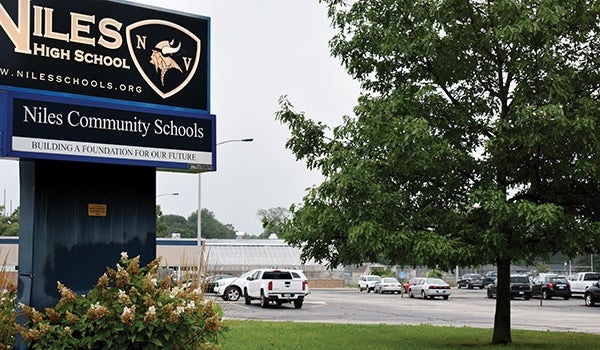LWVBCC explores fracking with forum
Published 9:47 pm Tuesday, November 13, 2012
BERRIEN SPRINGS — Hydraulically fracturing shale and injecting sand carried with water and chemicals into hairline cracks keeps them open so oil and natural gas flow out.
If any company locates a sweet spot for high-volume fracking in Michigan, the rate of drilling wells would escalate quickly, consuming huge amounts of water.
There has been no fracking in Berrien County, and it’s not yet economically feasible for Miller Energy of Kalamazoo, a small fourth-generation company owned by Luke Miller.
Miller participated in a League of Women Voters forum moderated by President Liz Ennis Tuesday night at Berrien RESA.
Fracking has been around since the 1940s with Halliburton, and in Michigan since 1952, but modern deeper, more water-intensive horizontal wells are not like historic oil and gas operations.
Residents are concerned because of the lack of disclosure of chemicals transported on roads and injected into the ground, but Bill Mitchell of the Michigan Department of Environmental Quality (DEQ) Office of Oil and Gas compared it to a can of Coke — regulators know what chemicals are ingredients, but not the “recipe” ratios because companies consider those trade secrets.
Mitchell, a geologist who covers an eight-county area, also indicated enforcers “can always use more people” to monitor — especially in an anti-regulatory political climate.
Miller also represented the Oil and Gas Producers Education Foundation, the industry’s outreach arm created in 2003. Historically, Michigan ranks in the middle of the pack as an oil and gas producer. A big field was discovered in mid-Michigan about 1925. More than 56,000 wells have been drilled since. Sixty-six of 68 Lower Peninsula counties are producers.
Michigan has the largest underground storage capacity in the nation and was first in 1976 to implement a natural resource trust fund. Seven hundred wells have been drilled in 12 Southwest Michigan counties across 20 fields, yielding 18 billion barrels of crude and 49 billion cubic feet of natural gas.
Net oil imports peaked at 60 percent in 2005 and stand at 45 percent.
“We’ve seen a vast increase in jobs — almost 200,000 across the U.S. industry in the last five years,” Miller said. “We produce 22 percent of natural gas we consume. Oil and gas companies pay royalties on production of $150 million worth of income to 8,000 private residents — $19,000 a year if you own your minerals with a producing well. You’re looking at 10,000 direct jobs in Michigan, over 150,000 indirectly.”
Dowagiac’s Rudolphi wildlife preserve was a trust fund project. Overall, $1.2 billion has gone into the fund for 1,600 projects. Money is derived from oil and gas revenue Michigan receives from production on state land. Berrien County has received $12 million for 45 projects.
Fracking “is not drilling,” Miller emphasized, “but a completion process. We have 60 years in the state with regulation and have done over 12,000 wells, mainly vertical. It’s a safe, regulated process to protect the water. Surface casing (steel pipe sheathed in cement) extends 100 feet below the freshwater aquifer. Drilling continues to set product’on casing, again with two layers of protection. Horizontal wells necessitate a third ‘intermediate’ casing.”
According to Miller, vertical well uses 50,000 gallons — as much water as a restaurant aquarium — versus 5 million gallons for a horizontal well — 10 Olympic pools or eight to 10 acres of corn. Miller said producing a billion cubic feet of gas adds 11 million gallons of water back into the atmosphere.
Frack fluid, despite chemical additives, is usually 98 percent water and sand.
• There has been no fracking to date in Berrien or Cass County.
• Berrien County has no active wells.
• Cass County has 54 oil wells, but only four producing. There are two natural gas wells shut in, a brine disposal well in Calvin Township and no gas storage wells.






